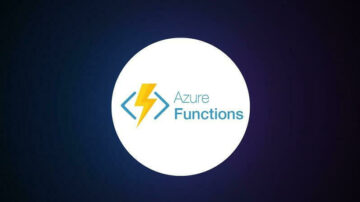
What is Microsoft Azure?
Microsoft Azure is a cloud platform with an ever-expanding set of cloud services that help organizations build and run applications. With a wide range of tools and functions, Azure lets you build, test, deploy, and manage applications and services hosted in the cloud. The flexibility of serverless computing enables teams to quickly scale applications and seamlessly operate hybrid cloud infrastructures.
Serverless computing emerged onto the market 10+ years ago and has been widely adopted for the scalability and accelerated innovation it brings. Now, organizations are evolving their cloud strategy to include hybrid, multi-cloud, which enables cloud-native application development and deployment.
As organizations shift to hybrid cloud environments, there are two platforms really dominating the market and Microsoft Azure is the fastest growing with adoption rates skyrocketing.
Let’s dig into what Azure is all about and some of the use cases.
What can Azure do for my business?
As on-prem data centers become obsolete, and organizations look to modernize, Azure has the flexibility and scalability to adapt to the business needs of your organic IT landscape. Azure shines when it comes to building and running your software with speed and agility, empowering developers to build productively and innovate faster.
Microsoft Azure has an abundant number of service offerings to drive innovation such as Azure HDInsight for Apache Hadoop, Spark, and Kafka, Azure Container Instances for easy container deployment, and Azure Kubernetes Service. All these diverse use cases allow for development with containers and Kubernetes, serverless, and more.
As the world has shifted to remote offices, it’s more important than ever to ensure seamless access to applications to stay productive with a connected workforce. Azure Active Directory (Azure AD) enterprise identity service provides single sign-on and multi-factor authentication to help protect your users from 99.9 percent of cybersecurity attacks. This means your business is protected with a universal identify platform and you can ensure the authorized people have the right access to the proper resources. Azure AD manages more than 1.2 billion identities and processes 8 billion authentications every day and was named a Gartner Magic Quadrant 2020 leader in Access Management.
Overall, Azure has a collection of services designed to turn previously complex solutions into easily enabling teams to implement solutions and scale on-demand.
Why Azure vs. AWS
When it comes to hybrid cloud, Microsoft recognized the need for hybrid clouds early and Azure has long supported hybrid cloud services such as Azure Stack, where you can use your onsite services to run your applications. With Azure cloud services, you can bring complete Azure functionality to your own premises data centers the pay-as-you-go model for its public cloud. Azure was the first to bring this type of functionality to market and still leads the way.
For developers, Azure has multiple app development options in place to help deploy and scale. AWS offers similar solutions but doesn’t have as many features on the app hosting side, giving Azure the edge when it comes to hosting cloud apps.
Finally, as almost all organizations use MS tools, Azure’s integration with open-source, and on-prem systems will give Azure the upper hand.
Both Azure and AWS continue to innovate by offering new products, new integrations, and new pricing structures. They are also seeing Google Cloud Platform join the cloud battle. While they all offer similar capabilities, your business needs will ultimately determine which one is the best fit.
Modernization comes with challenges
Azure is a platform designed to transform your business. But as with all transformations, there will be some challenges along the way. For example, will you know how to keep track of all the movement inside these new environments? Hybrid, multi-cloud application and infrastructure environments can’t be siloed – visibility is needed for critical interdependencies. Cloud dynamics make is extremely hard to keep up with auto-scaling, where services come and go based on demand and there are major disconnects in understanding how different services work together, making it challenging to determine the root cause.
These environments are beyond human capacity, with thousands of business-critical services and related dependencies. Trying to do that manually puts a tremendous strain on operations teams and can be error-prone. That’s why monitoring plays such a critical role in Azure environments. But monitoring needs to go beyond just “APM”, it needs to understand application workloads and Azure infrastructure, providing collaboration between apps and infrastructure teams for seamless cross-team collaboration. Monitoring needs to provide observability on everything running, including containers to show how everything is talking to each other across the IT layers, with real-time dependency models that detect deviations from normal behavior. This is a critical component in being able to identify the root cause of a problem.
Dynatrace brings value to Azure and solves modernization challenges
Dynatrace’s Software Intelligence Platform is a single source of truth for your cloud platforms, allowing you to monitor the health of your entire Azure environment (infrastructure and applications) and beyond including other public and on-prem clouds, data centers, and mainframes. Dynatrace recently announced enhanced AI-powered observability for Microsoft Azure, including all Azure Monitor services to deliver more precise AI-powered answers, enabling organizations to efficiently deploy and run cloud environments and accelerate digital transformation. Only Dynatrace can provide these key business values:
- End-to-end coverage of hybrid, multi-cloud
- Single source of truth, removing limited visibility for Azure services
- Smartscape provides context to services so you can easily track dependencies between entities with no additional configuration
- Davis®, Dynatrace’s AI-engine, understands the dependencies between Azure services and can provide precise root-cause analysis
- Automation/enterprise readiness, the single platform enables collaboration between app & infrastructure teams
Dynatrace is committed to eliminating blind spots for our cloud customers. We understand the challenges that come with transformation and want to ease that burden with automatic and intelligent observability. By extending the Dynatrace platform to ingest all metrics from Azure, including services, in addition to the data already captured by Dynatrace, customers get even more precise answers in their Azure multi-cloud environments to provide even more precise answers, saving organizations time, money, and resources. This robust insight leads to faster cloud adoption and more effective transformation.



